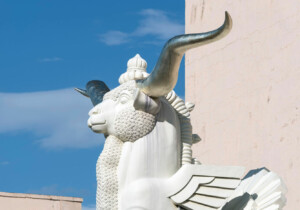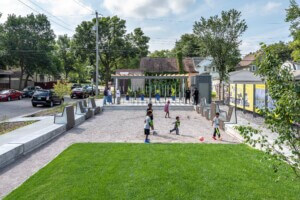The new year may signal a turn to fresh beginnings, but before we close the book on 2017, this is the last chance to catch a range of thoughtfully-curated exhibits centered on design, history, planning, technology, and architecture. From a photographic survey of U.S.–Mexico border monuments to Isamu Noguchi’s internment camp archive and a showcase of MacArthur genius grant winner Hector’s work on urban processes, these shows engage the present and past of architecture in provocative ways. Don’t sleep on these shows!
Tu casa es mi casa
Neutra VDL
2300 Silver Lake Blvd, Los Angeles, CA
Closing January 13, 2018
This exhibit sheds light on the porous boundary between Mexico City and Los Angeles, with a focus on “architectural space, mass production, and domesticity within the legacy of modernism.” The show displays site-specific installations by three Mexico City–based design teams, Frida Escobedo, Pedro&Juana, and Tezontle, who responded to letters from three California-based writers, Aris Janigian, Katya Tylevich, and David Ulin, who each spent time in the Neutra house.

Joris Laarman Lab: Design in the Digital Age
Cooper Hewitt, 2 E 92st Street, New York
Closing January 15, 2018
The Cooper Hewitt is hosting the first major American exhibition of the Dutch designer Joris Laarman, who mixes traditional craftsmanship with modern fabrication to produce unique furniture design. On display is a range of Laarman’s work, arranged thematically to reveal each shift in his firm’s investigation of digital design.
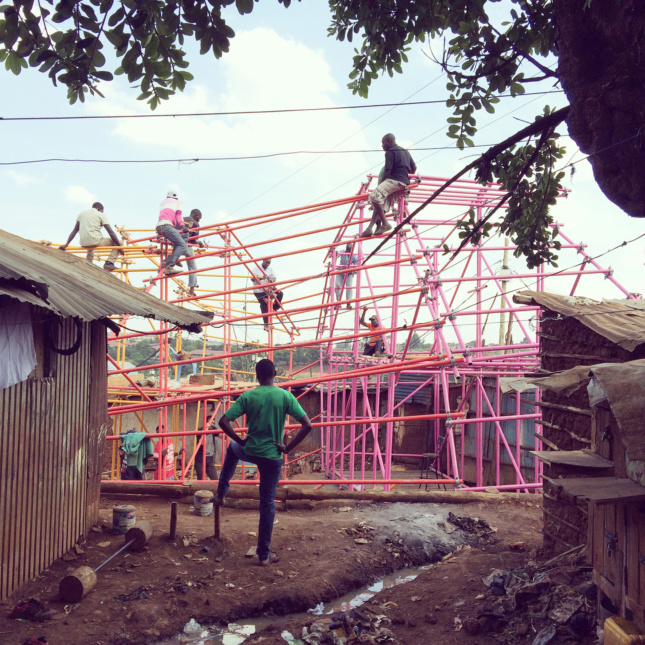
2017 organizational grant to New York Foundation for Architecture-Center for Architecture for Scaffolding. (Courtesy SelgasCano)
Scaffolding
Center for Architecture, 536 LaGuardia Place, New York City
Closing January 18
Greg Barton’s Scaffolding is an examination of the broad uses of scaffolding as a tool of utility in creating spaces of inhabitation and facilitating access to such spaces. With the widespread use of scaffolding across New York City, measuring an approximate length of 280 miles, the exhibit allows the audience to reimagine the ubiquitous temporary structures as potentially engaging features of the city’s streetscape.
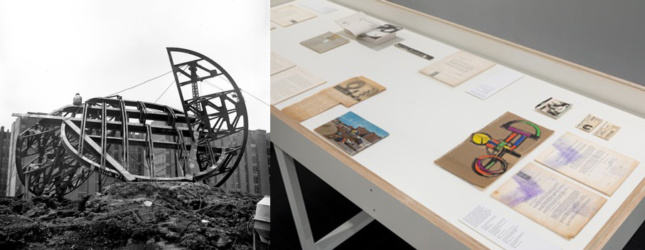
No. 9
Columbia University Graduate School of Architecture, Planning and Preservation, 1172 Amsterdam Avenue, New York
Closing January 19, 2018
No. 9 is an archival collection of the public sculpture program initiated in Mexico City for the 1968 Olympics. Termed the La Ruta de la Amistad (Route of Friendship), the network of nineteen monumental sculptures was influenced by multinational and modernist aesthetics, the only caveats of their design being abstract, composed of concrete and monumental in size.
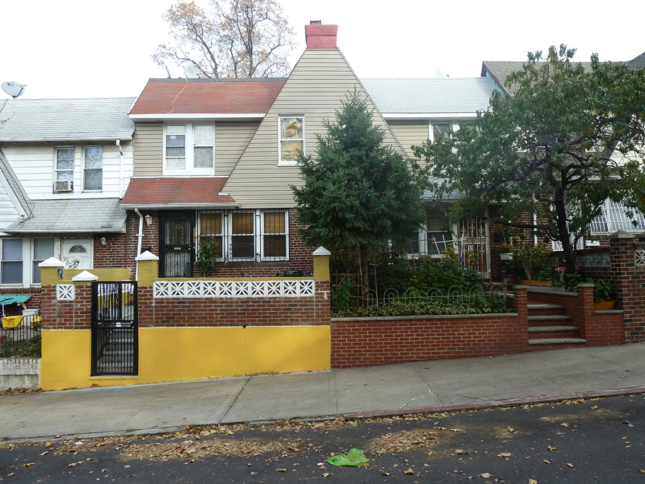
All the Queens Houses
The Architectural League of New York, 594 Broadway, Suite 607, New York
Closing January 26, 2018
The Architectural League’s All of the Queens Houses is a collection of 273 photographs of residences in Queens taken by architect Rafael Herrin-Ferri. The collection explores the vernacular, low-rise housing stock of the borough and the demographic diversity therein. Although Herrin-Ferri’s project contains over 5,000 photographs, those presented by the League are located in 34 neighborhoods across the borough.
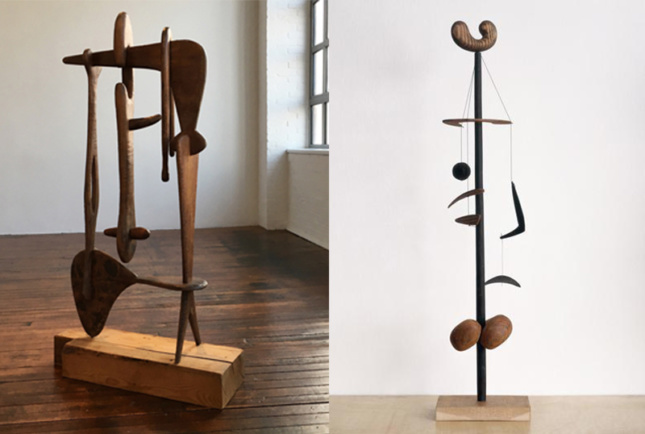
Self-Interned, 1942: Noguchi in Poston War Relocation Center
The Noguchi Museum, 9-01 33rd Road (at Vernon Boulevard), Long Island City, NY
Closing January 28, 2018
The show is centered on sculptor Isamu Noguchi’s decision to voluntarily report to Poston, a Japanese internment camp in Arizona, in order to contribute his designs and skills to support the forcibly displaced residents. It features over two dozen works by Noguchi from 1941 to 1944, created pre- and post-internment, evoking this dark moment in American democracy and the impact of this experience on his art.

Damon Rich and Jae Shin: Space Brainz—Yerba Buena 3000
Yerba Buena Center for the Arts, 701 Mission Street, San Francisco, CA
Closing January 28, 2018
In Space Brainz–Yerba Buena 3000, the gallery becomes a laboratory for dissecting power in the built environment through Hector’s recent projects in architecture and planning in North American cities. A colorful structure that fills the space is the framework on which Hector’s models, photographs, and mock-ups take viewers on a journey of urban issues on many scales, from broken sidewalks to riverfront projects, suggesting that the city is a place where negotiation and conflicting interests are the only constants.
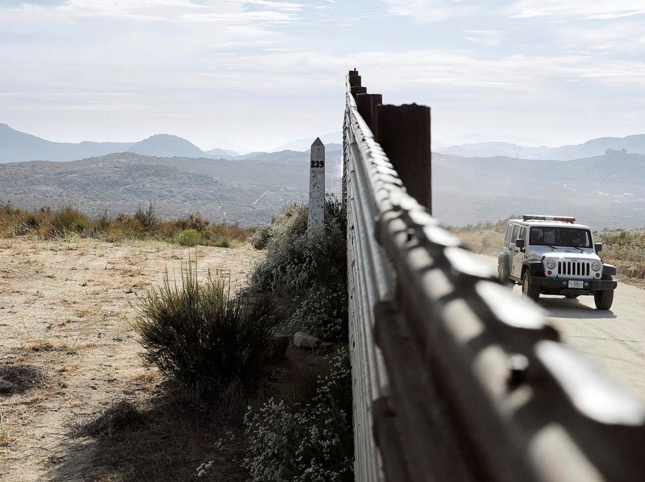
Monuments: 276 Views of the U.S.–Mexico Border by David Taylor
The Museum of Fine Arts, Houston, Caroline Wiess Law Building, 1001 Bissonnet Street, Houston
Closing January 28, 2018
Almost a decade ago, photographer David Taylor set out to photograph the 276 obelisks that mark the U.S.–Mexico boundary established at the end of the Mexican–American War in 1848. This project took him along the 690 miles of border, often on foot, requiring special permissions, and culminated at a time when the border has re-emerged as a political flashpoint. This exhibit, in the artist’s own words, a glimpse of what the border actually looks like, at a time when it seems to mostly exist in the realm of caricature and threat.
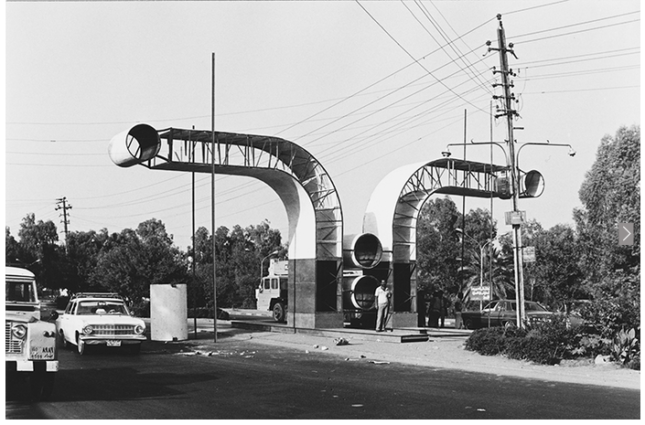
Every Building in Baghdad: The Rifat Chadirji Archives at Arab Image Foundation
LAX ART, 7000 California State Route 2, West Hollywood
Closing February 17, 2018
The current instability of Iraq and Syria has destroyed and threatened countless structures of architectural significance, erasing large swaths of heritage in the Cradle of Civilization. A respite from this loss is the archival collection of organizations such as the Arab Image Foundation with their collection of photographs by Iraq architect Rifat Chadirji, who was pivotal to Baghdad’s postwar modernization between the 1950s and 1970s. LAX ART is currently showing 60 photographic paste-ups of Chadirji’s body of work, as well as hundreds of the architect’s photographs of the streets of Baghdad in the 20th century.
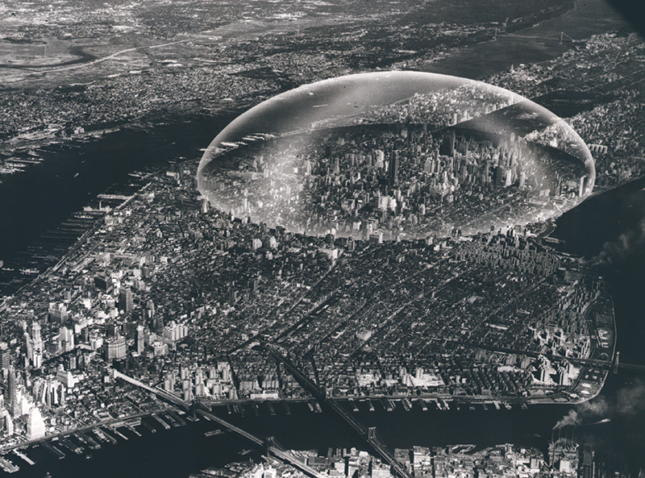
Never Built New York
Queens Museum, New York City Building, Flushing Meadows Corona Park, Queens, NY
Closing February 18, 2018
AN‘s Contributing Editor Sam Lubell with contributor, critic, and writer Greg Goldin, shows a New York that could have been, featuring original prints, drawings, and models that never made it past the drawing board. Combed from over 40 different public and private collections, the show brings together the visions of Frank Lloyd Wright, Robert Moses, Eliot Noyes, and Steven Holl, among many others, and also shows a glimpse of the city’s famous icons as they were originally planned. A bouncy castle version of Noyes’ Westinghouse Pavilion and an insertion of 70 models into the Panorama of New York City, the scale model of the city, are among its highlights.









